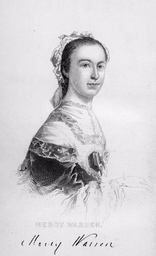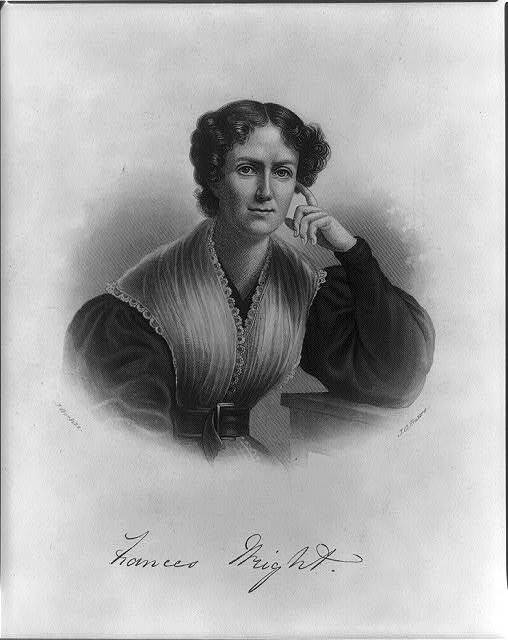Warren and Wright through the Eyes of Modern Historians
Mercy Otis Warren has been the subject of several biographies and one that certainly stands out amongst the rest is A Woman’s Dilemma: Mercy Otis Warren and the American Revolution by Rosemarie Zagarri. In her work she argued that Warren was consistent in her beliefs that women could only participate in the public realm so much as their domestic roles would allow. She asserted that Warren saw her public literary role as an important aspect of her life, but, not more important, nor in contention with, her role as a wife and mother. Similarly, Lester Cohen in his article “Mercy Otis Warren: The Politics of Language and the Aesthetics of Self” argued that Warren’s views of womanhood and women’s roles were tied to her views of republicanism and the language she used in her public writings. He stated that Warren took this connection even further when she “argued that the woman was the bearer of republican history and culture, the source of virtue, probity, and patriotism, and the transmitter of truth” and hence was the full representation of republicanism.[1]
One of the most unusual facets of Warren’s writings is the fact that she took credit for her work and self-promoted. In her article “Insisting on Femininity: Mercy Otis Warren, Susanna Rowson, and Literary Self-Promotion” Patricia Tarantello reviewed these early Republican female writers and compared them to other female writers who either published anonymously or with pseudonyms. She argued that both of these women were actually standing outside their prescribed roles as women and promoting themselves as valuable additions to the public literary world even against more substantial odds than their male counterparts. She asserted that both of these writers suggested it was because they were women that they were best able to express themselves to the public.”[2] Specifically, she contended that Warren embraced her role as a public, patriotic, and republican woman and the number of works she published spoke to this claim.
[1] Lester H Cohen, “Mercy Otis Warren: The Politics of Language and the Aesthetics of Self,” American Quarterly 35, no. 5 (1983): 495.
[2] Patricia F. Tarantello, “Insisting on Femininity: Mercy Otis Warren, Susanna Rowson, and Literary Self-Promotion,” Women’s Studies: An Interdisciplinary Journal 46, no. 1–4 (June 1, 2017): 183.
Fanny Wright, however, has not been the subject of a plethora of monographs; however Fanny Wright : Rebel in America by Celia Morris Eckhardt certainly represents the subject matter well. In her very title, Eckhardt portrayed Wright as rebel and a woman who stood against the status quo. Eckhardt delineated Wright’s numerous radical positions, such as anti-marriage, anti-religion, anti-slavery, and her belief in the equality of women to keep their own counsel and have their own individuality. Eckhardt traced the consistent struggles Wright faced as someone considered even by the most liberal standards of the day, a radical. Eckhardt argued that most women who could identify as feminists considered themselves “reformers rather than radicals” and they were not interested in Wright’s “thoroughgoing transformations.”[1] She concluded that this ultimately was Wright’s undoing to both her value to her contemporaries and to the history of feminism. Molly Abel Travis reached a similar conclusion in her article “Frances Wright: The Other Woman of Early American Feminism.” She argued that due to her radical views, Wright “caused a furor and provided a negative example for later nineteenth-century feminists, most of whom developed ‘womanly’ strategies of accommodation.”[2] In her work, Travis provided a detailed account of Wright’s public attempts to change the world around her as an early abolitionist and anti-religionist. She stated that Wright consistently challenged (and often doomed) herself by “always [choosing] the path of the most resistance.”[3] Travis argued that it was Wright’s gender coupled with her radicalism that ultimately provided the onus for her failure to enact any real change in the world around her or to be embraced by the feminist movement.
Contrastingly, however, in her book Articulating Rights : Nineteenth-Century American Women on Race, Reform, and the State Alison Parker argued that Fanny Wright’s radicalism did in fact serve to make her an important part of the early feminist movement. Parker stated that Wright’s insistence on speaking in the public forum on such important political topics such as anti-slavery set her apart from her contemporaries and opened doors for later feminists and female reformers to walk through. She pointed out that “even if subsequent women reformers did not want to be caricatured as ‘Fanny Wrightists’ simply because they chose to speak in public…they recognized her to be a path-breaking role model, an early advocate for woman’s rights, and a pioneer who had fought hard to resolve the problem of slavery.”[4] Travis asserted that it was the very nature of Wright’s methods in the public sphere that made her stand out as one of the most important influences on later generations of feminists.
[1] Eckhardt, 252.
[2] Molly Abel Travis, “Frances Wright: The Other Woman of Early American Feminism,” Women’s Studies 22, no. 3 (1993): 389.
[3] Travis, 392.
[4] Alison M. Parker, Articulating Rights : Nineteenth-Century American Women on Race, Reform, and the State (DeKalb, IL: Northern Illinois University Press, 2010), 11.

